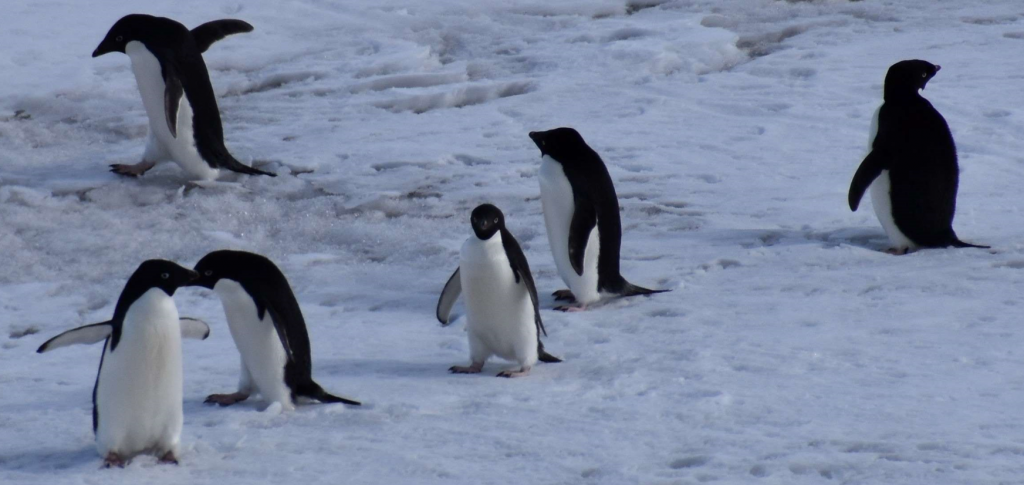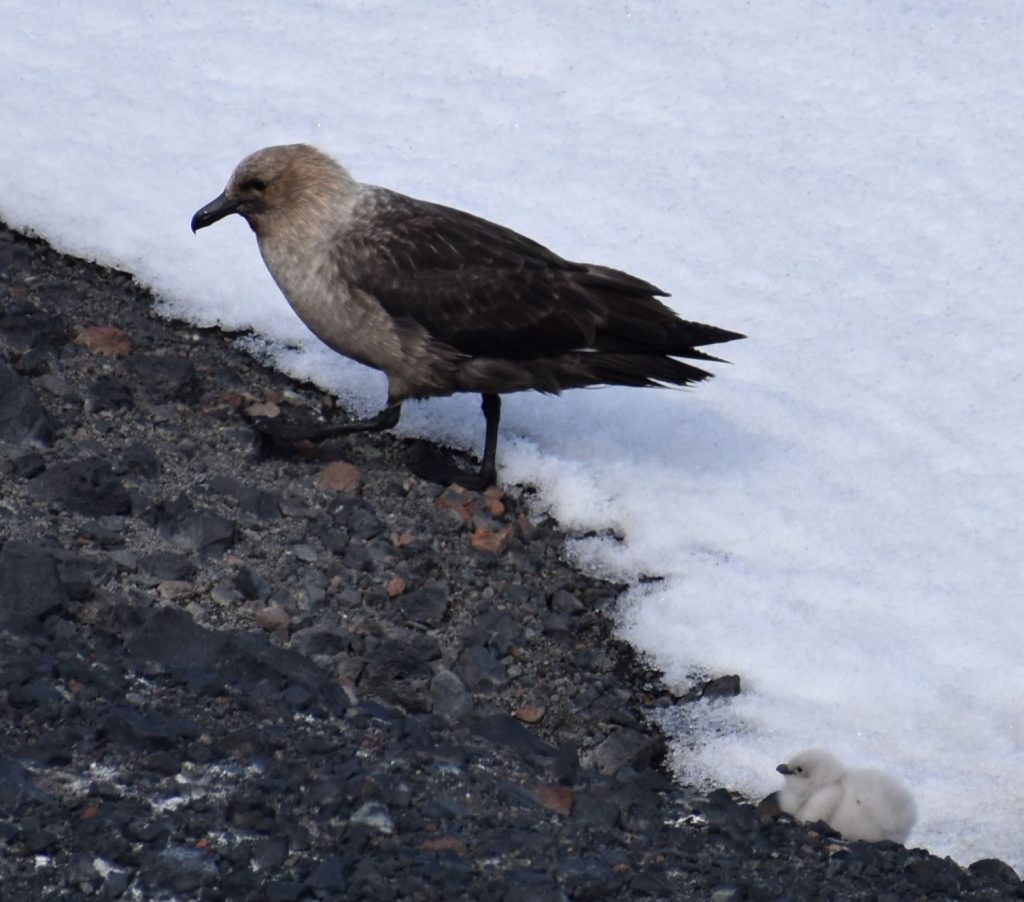Merry Christmas! From December 22 to Christmas Eve on December 24th, we had clear skies and collected 50 hours of data. Working with our PI, we also did training sessions on the principles of how different components of the system work. On the iron lidar, we identified ways to correct the laser spectra on the transmitter side, and improve the collection efficiency on the receiver side. These improvements doubled the signal we received!

During the summer season, polar mesospheric clouds (PMCs) form over McMurdo, which are best measured with the iron lidar’s 374 nm channel. These are interesting atmospheric phenomena that we study, but collecting data in the summertime is a little challenging because of background noise from the sun. The sun will stay up until our next sunset on February 21st. Improvements we made during this session will improve our data quality for the next run.
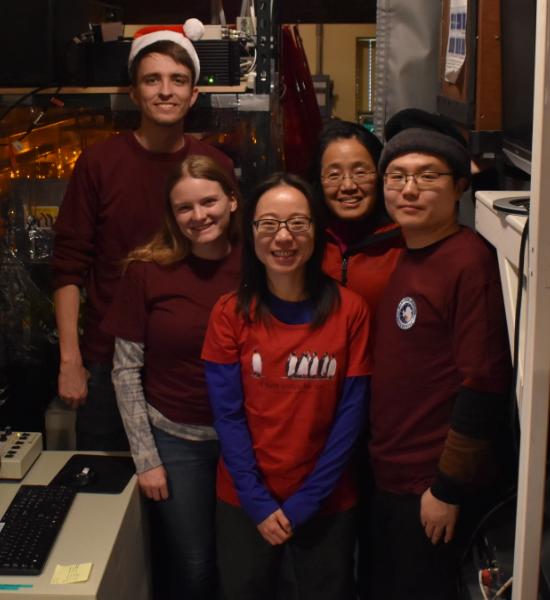
Our full team in the Lidar Lab! 
Our day team at Hut Point, after seeing penguins
On Christmas day, skies were cloudy so our team took some time to enjoy the holiday. We went to Hut Point, where the Discovery Hut that Scott’s team built in 1902 still stands preserved in ice. We toured inside the hut and found supplies from the early 1900s still there- including seal meat, onions, dog biscuits for the sled dogs, and oatmeal. There is also the remains of an early science experiment measuring gravity near the pole (gravity is slightly different at the equator vs. the poles, and early explorers measured this with remarkable accuracy). Elaine Hood from USAP gave a brief history lesson on the different missions that used the hut, and there are many incredible stories.

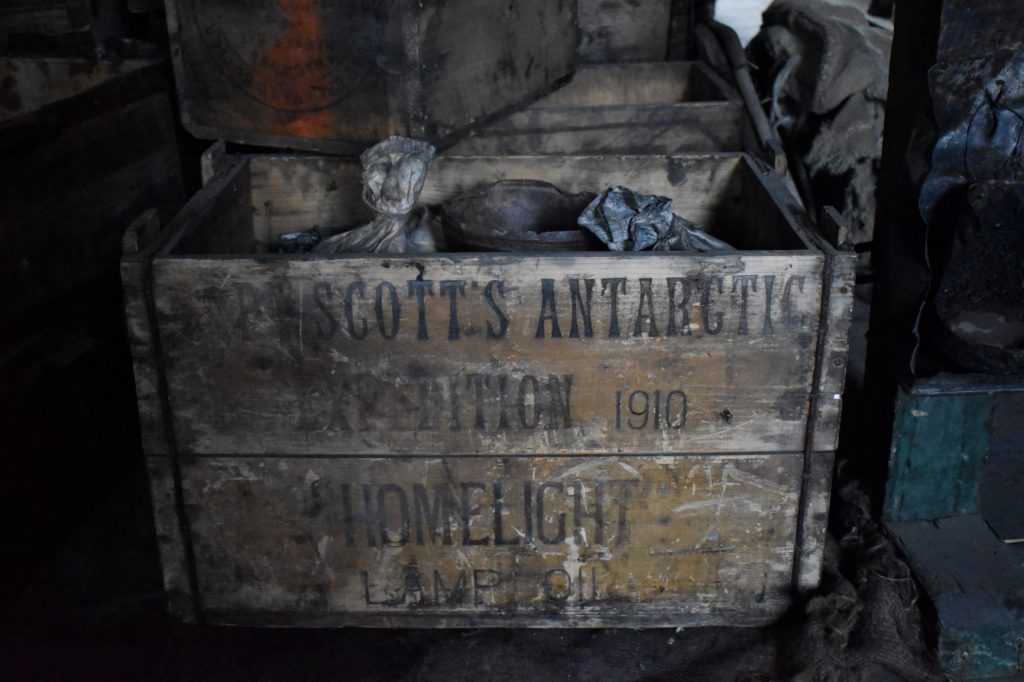
One of many supplies left in the hut 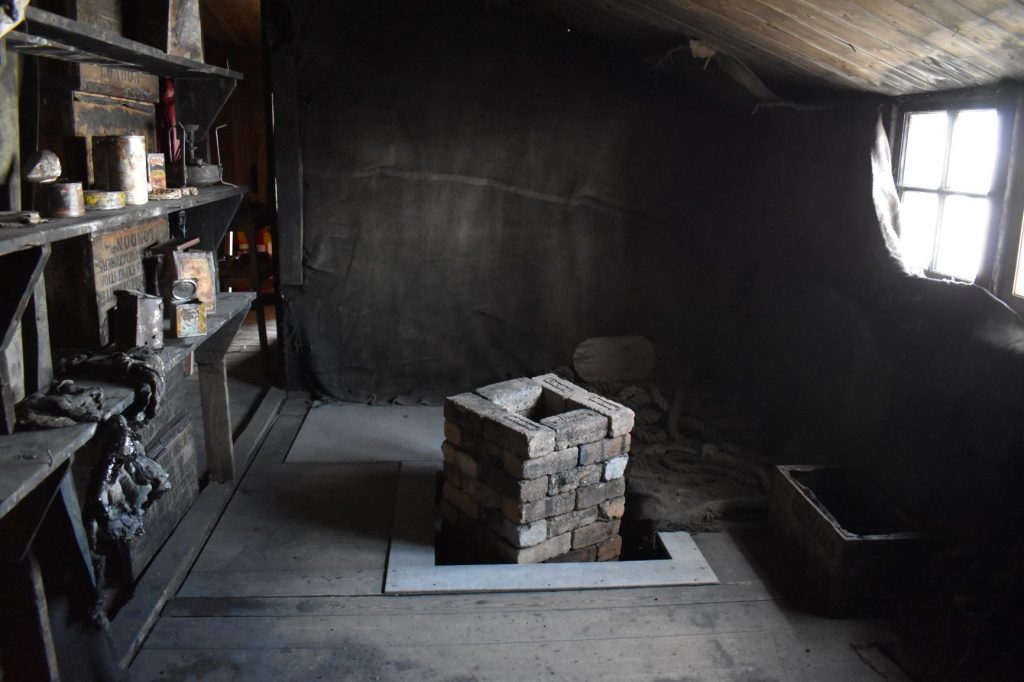
Gravity science experiment 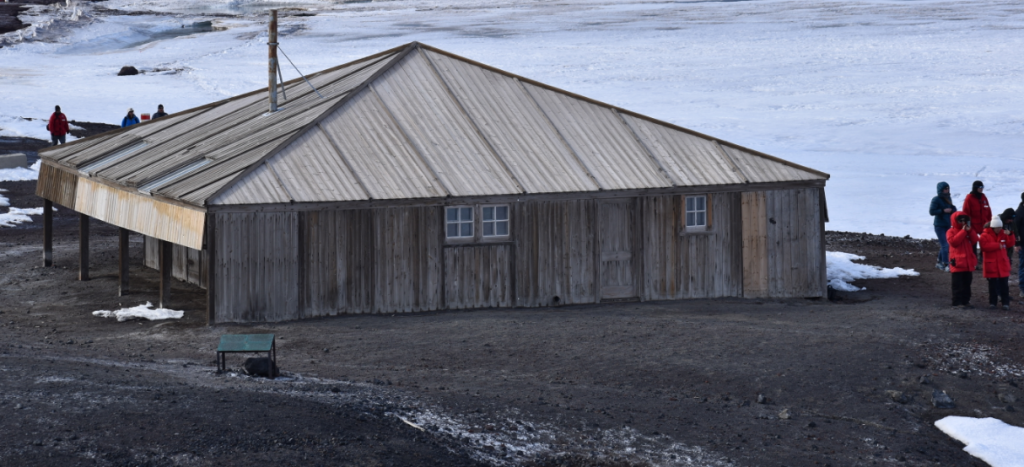
Discovery Hut
While outside Discovery Hut, we saw our first Adelie penguins! We also saw seals swimming in the cracks of the sea ice, and baby Skua birds.
